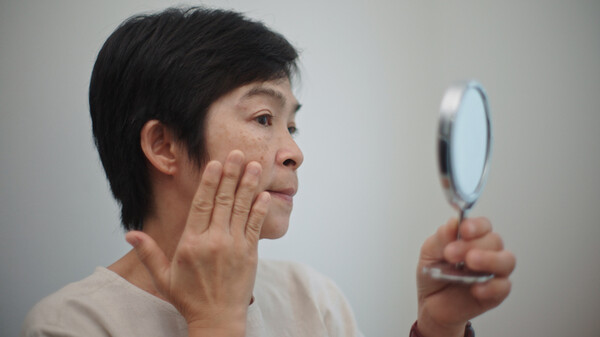As people age, some may experience drooping eyelids and a narrowing field of vision -- symptoms that could indicate ptosis. While often mistaken for a cosmetic issue, ptosis is a medical condition that can interfere with daily activities and, in severe cases, lead to significant vision impairment.

“Ptosis is a condition in which the upper eyelid droops abnormally, covering the pupil and reducing the gap between the upper and lower eyelids,” said Professor Jang Sun-young of the Department of Ophthalmology at Soon Chun Hyang University Hospital Bucheon. “It can be congenital or acquired due to aging, trauma, or nerve paralysis. Among these, age-related weakening of the eyelid muscles is the most common cause.”
Ptosis can also result from a rare, chronic condition known as myasthenia gravis, which causes progressive paralysis of the extraocular muscles. While the disease itself is incurable, ptosis caused by myasthenia gravis is typically manageable with medication.
Ptosis can make the eyes appear smaller or give the impression of fatigue and drowsiness. To compensate for obstructed vision, patients may unconsciously strain their forehead muscles or raise their eyebrows in an effort to keep their eyes open. In some cases, the skin of the eyelid stretches and droops further, leading to irritation or soreness along the edges.
“Ptosis can be suspected if lifting the eyelid by hand results in a noticeable improvement in vision or appearance,” said Professor Jang.

Ptosis surgery is different from double eyelid surgery
Many people mistakenly believe that double eyelid surgery and ptosis surgery are the same. However, double eyelid surgery simply creates a crease in the eyelid without altering the height of the eyelid gap, while ptosis surgery involves lifting the eyelid by strengthening the muscle responsible for eyelid elevation. As a result, double eyelid surgery alone is not effective in treating ptosis.
The surgical approach to treating ptosis depends on several factors, including the cause of the condition, the strength of the eyelid muscles, skin laxity, brow position, and the presence of any underlying ophthalmic conditions. As such, an experienced surgeon is crucial for an accurate diagnosis.
“In addition to functional recovery, achieving side-to-side symmetry and favorable cosmetic outcomes are also important considerations,” Professor Jang added.
While some studies have suggested a link between ptosis and astigmatism, Dr. Jang clarifies that "this has not been clearly demonstrated in clinical practice, and it is rare for ptosis to directly cause poor vision."
In adults, the decision to undergo ptosis surgery is often based on individual discomfort. However, in cases of congenital ptosis, early diagnosis and treatment are crucial, as the condition can impact vision development and is linked to disorders such as amblyopia.
“Eyelid drooping due to aging is a natural change that can affect anyone, but if it leads to functional problems, it should be diagnosed and treated promptly,” said Professor Jang.

